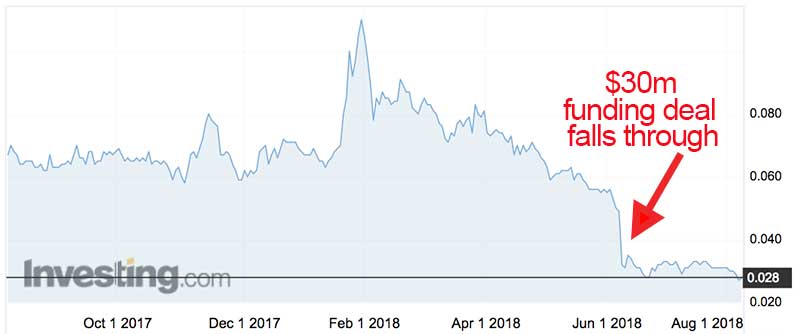Why graphite is set to steadily rise into the 2020s
Mining
Barry FitzGerald writes his legendary Garimpeiro resources column weekly for Stockhead:
Kalgoorlie’s big blue sky made a welcome return on the second day of the Diggers & Dealers bash.
It was therapeutic stuff for those still dealing with the fallout from one too many shots the night before.
Therapeutic perhaps, but not enough to take away the gloom caused by the recent attack on the share prices of the miners and explorers in response to weaker metal prices on trade war fears — just as they were all rocking up to the annual knees-up.
The price falls for gold and lithium in particular meant that the two sectors relied on to give D&D a bit of a buzz were not able to deliver.
But just as the return of Kalgoorlie’s blue sky after a long run of overcast days lifted spirits, so too did a number of upbeat presentations on market sectors where price falls have not been a concern.
On the up
Iron ore, minerals sands, and the non-lithium battery materials sector were the prime examples.
Today’s interest is in the latter category and the buzz Battery Minerals (ASX:BAT) managing director David Flanagan was able to inject in to his post-lunch presentation at D&D.
Flanagan is a master at this sort of stuff.
But it has to be said there was a query around his enthusiasm level after BAT was knocked down heavily in June when Resource Capital Fund pulled the plug on a $US30m funding facility for BAT’s Montepuez project in Mozambique.

But this week Flanagan rose to the challenge, whipping up interest in the graphite story with the first two slides in his presentation on price and demand forecasts from two of the leading forecasters in the battery materials space, Roskill and CRU.
The graphs show graphite is not a lithium story.
The experts reckon pricing and demand is set to steadily rise well into the 2020s, with the growth coming from graphite’s use in lithium-ion battery anodes and in fire-retardant building cladding.
The bottom line is the experts believe the world will need the equivalent of four-and-half projects the size of the world-scale Balama project in Mozambique — recently brought in to production by the $850 million Syrah Resources (ASX:SYR) – to be built in the next five years.
And for that to happen, the experts are predicting that “incentive’’ (or higher) prices for graphite will be needed.
Graphite market strong
“The market for physical graphite is really strong,” Flanagan told Stockhead on the sidelines of D&D.
“If we were in production today we would be making a margin of about $US470 a tonne,’’
>> Read our quick-guide to ASX graphite stocks
To capture those sort of margins (based on a production cost of $US380/t and a sales price of $US850/t), BAT needs to finalise replacement funding for project — something Flanagan says is well in hand.
BAT was a 6c stock before the original financing plan fell through.
It is now back at 2.7c for a market capitalisation of $32m.
It is a source of frustration for Flanagan as the business case for Montepuez remains intact — if not enhanced by more recent graphite price expectations.
On forecast annual output of 45,000-50,000tpa in the first stage of its development, Montepuez has a forecast annual net operating cash flow of $US20 million for 10 years.
Those sort of figures are why Flanagan is confident BAT will secure the $A60 million needed to make the first stage development happen, and provide some working capital.
BAT has binding contracts for the planned production with three Chinese groups, and a US group.
“Sooner or later, I would like to think that the market will recognise the fundamental value in the company,’’ Flanagan said.